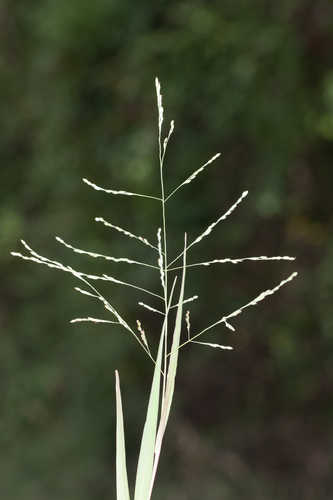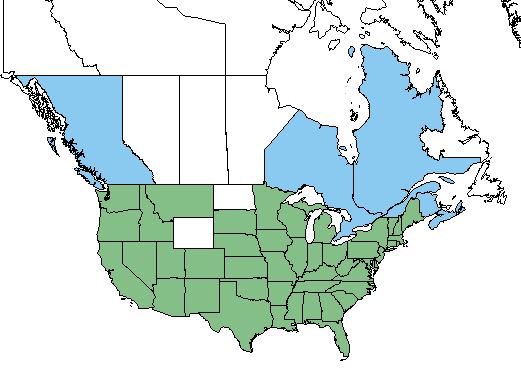Difference between revisions of "Panicum dichotomiflorum"
(→Ecology) |
(→Conservation and Management) |
||
| Line 57: | Line 57: | ||
==Conservation and Management== | ==Conservation and Management== | ||
| + | Planting a shade canopy will block the necessary sun light for ''P. dichotomiflorum'' is grow. <ref name= "USDA"> [https://plants.usda.gov/core/profile?symbol=CEAM USDA Plant Database]</ref> | ||
==Cultivation and restoration== | ==Cultivation and restoration== | ||
Revision as of 17:11, 24 May 2018
| Panicum dichotomiflorum | |
|---|---|

| |
| Photo by John Gwaltney hosted at Southeastern Flora.com | |
| Scientific classification | |
| Kingdom: | Plantae |
| Division: | Magnoliophyta - Flowering plants |
| Class: | Liliopsida – Monocotyledons |
| Order: | Poales |
| Family: | Poaceae |
| Genus: | Panicum |
| Species: | P. dichotomiflorum |
| Binomial name | |
| Panicum dichotomiflorum Michx. | |

| |
| Natural range of Panicum dichotomiflorum from USDA NRCS Plants Database. | |
Contents
Taxonomic Notes
Synonyms: none
Varieties: Panicum bartowense (Scribner & Merrill), Panicum puitanorum (Svenson)
Description
P. dichotomiflorum is an annual graminoid of the Poaceae family that is native to North America.[1]
Distribution
Excepting North Dakota and Wyoming, P. dichotomiflorum is native to the United States, and has been introduced to British Columbia, Ontario, and Quebec. [1]
Ecology
Habitat
Moist habitats such as streams, flodplains, wet clearings, and waste sites are common environments to find P. dichotomiflorum. It requires full sun. [1]
This grass is considered an indicator for anaerobic and compacted soil. [1]
Phenology
Flowering commonly occurs between August and December, with October producing the majority of the buds. Late spring flowering has also been recorded. [2]
Seed dispersal
Seeds will fall off the stalks and into water and the ground, likely picked up by animals and dispersed. [1]
Seed bank and germination
Shallow flooding after seed dispersal is ideal for maximum germination. [1]
Germination will occur between April and May. [1]
Temperatures of 80F+ is ideal for proper germination.[1]
Small birds and ducks will was the seeds of the grass and deer will use it for browse. [1]
P. dichotomiflorum has been known to cause photo-sensitivity to livestock as well as extreme nitrate poisoning. [1]
Conservation and Management
Planting a shade canopy will block the necessary sun light for P. dichotomiflorum is grow. [1]